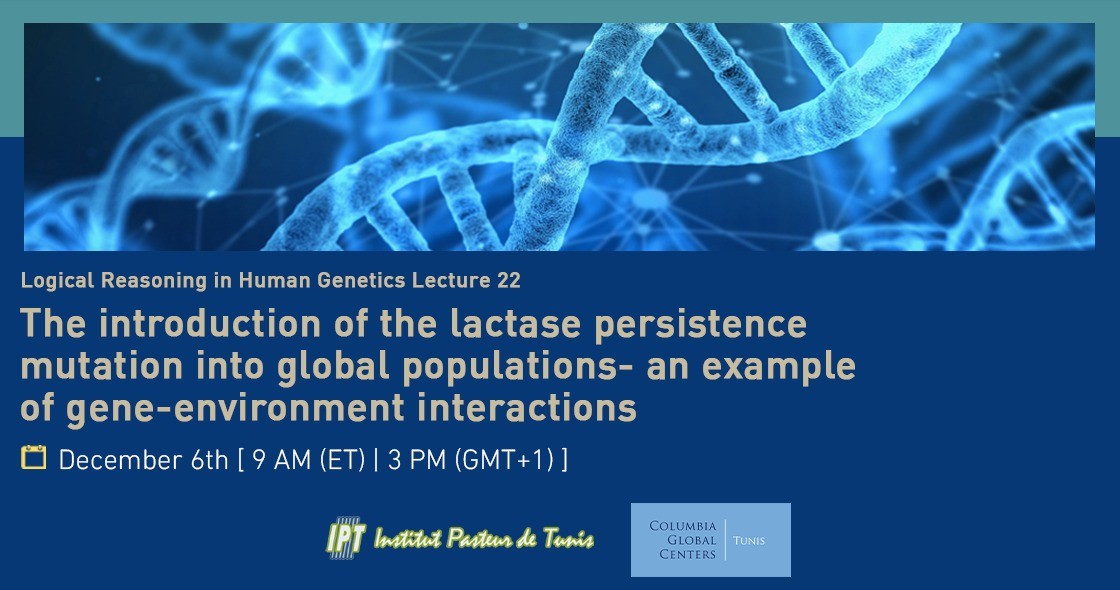Join us for the 22nd lecture from the Logical Reasoning in Human Genetics series presented by Pr. Nabil Enattah, Senior Researcher at the Libyan Biotechnology Research Center (BTRC), Tripoli, Libya, Former President of the University of Tripoli, Libya, and Former General Director of the Biotechnology Research Center (BTRC), Libya. ?
Register here.
Abstract:
The T_13910 variant located in the enhancer element of the lactase (LCT) gene correlates perfectly with lactase persistence (LP) in Eurasian populations whereas the variant is almost nonexistent among Sub-Saharan African populations, showing a high prevalence of LP. Here, in this presentation, we will discuss the circumstances we passed through during the identification of two new mutations among Saudis, also known for the high prevalence of LP. We confirmed the absence of the European T_13910 and established two new mutations found as a compound allele: T/G_13915 within the _13910 enhancer region and a synonymous SNP in the exon 17 of the MCM6 gene T/C_3712, _3712 bp from the LCT gene. The compound allele is driven to a high prevalence among Middle East population(s). Our functional analyses in vitro showed that both SNPs of the compound allele, located 10 kb apart, are required for the enhancer effect, most probably mediated through the binding of the hepatic nuclear factor 1 a (HNF1a). High selection coefficient (s) ~0.04 for LP phenotype was found for both T_13910 and the compound allele.
The European T_13910 and the earlier identified East African G_13907 LP allele share the same ancestral background and most likely the same history, probably related to the same cattle domestication event. In contrast, the compound Arab allele shows a different, highly divergent ancestral haplotype, suggesting that these two major global LP alleles have arisen independently, the latter perhaps in response to camel milk consumption. These results support the convergent evolution of the LP in diverse populations, most probably reflecting different histories of adaptation to milk culture.
